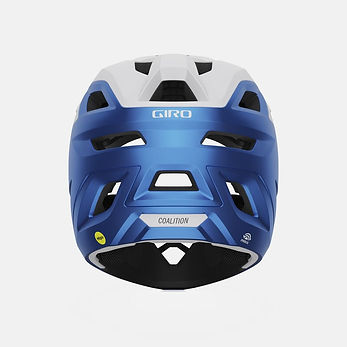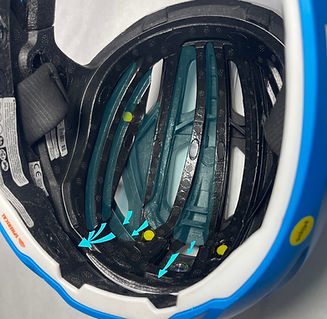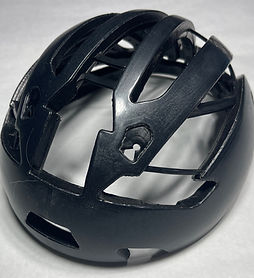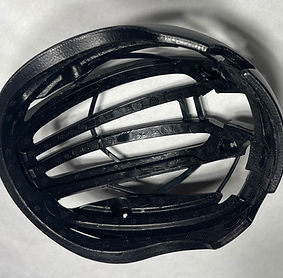GIRO, COALITION MTB Helmet
The Coalition was created as an update to the Switchblade, Giro’s previous entry into the light-weight full-face MTB helmet.
Our goals with the Coalition were to:
-
Reduce weight, with a goal of approximately 800g
-
Maximize airflow and cooling inside the helmet
-
Create a chinbar design that surpasses the competition in Chinbar Deflection testing.
Regarding the chinbar, most competition simply rivets a molded U-shaped chinbar to the EPS foam shell. In these cases, the the chinbar or EPS shell, or both, fail at or near the chinbar-deflection test limit.
The chinbar system on the Coalition features a full-wrap, one-piece chinbar molded in premium Pebax material.
Additionally, we designed the EPS shell to contain elastomer-bushings at the chinbar attachment points. Upon chinbar impact, the elastomers would allow the chinbar to deflect before the impact load would transfer to the EPS shell.
As a result, the chinbar system exceeds the chinbar-deflection certification standard by 2x, without breaking either the chinbar or the EPS shell.
We also spent considerable time designing and optimizing the vent and air-channeling scheme to enhance the cooling inside the helmet.
In our test lab, we used a helmet-headform equipped with thermocouples. We fit the headform inside prototype helmets and tested the system in our wind-tunnel to gather temperature data and simulated riding speeds.
In addition to the features above, the Coalition also incorporates the Spherical MIPS system developed on Bell Super DH, and used across the Bell and Giro helmet lines.
Tools/Skills- Solidworks Surfacing/Assembly, FEA, Prototype development, Testing, Project Management, Asia vendor management

Chinbar development


The chinbar was molded as a single "hoop" shape that wraps completely around the EPS shell.
This full-wrap shape allows the Chinbar to carry and distribute more of the impact load to create a stronger, more resilient helmet.
EPS Shell has four elastomer bushings (2 per side) where the Chinbar is attached. When the Chinbar sees a front-impact, the elastomers allow the Chinbar to flex before the load transfers to the EPS shell.
In-house testing was performed on an array of bushing durometers to understand the effectiveness of the system.



Air-channeling inside the Coalition

Vents across the front and underside of the brow-area lead to internal-channeling that allow airflow to be drawn out of massive rear vents.

As air is drawn or forced into the vents on the helmet shell, internal channels in the EPP MIPS component carry the air towards, and out, of the rear-vents (pads removed for clarity).

As air is drawn in through the Chinbar and lower helmet opening, air is direct towards, and out, of the back of the helmet.
Air channels were also added under the cheek and neck-pads (not shown) so airflow would not be impeded by the pads.



The EPP inner-shell component of the MIPS system (see Spherical MIPS section below) was also considered, to see how it may be improved to promote enhanced airflow.
The EPP foam was molded around an Acetyl "roll-cage".
The roll-cage system allowed us to remove foam at critical vent areas. The vents in the EPP inner-shell have long open sections that span front-to-back across the vents in the EPS outer-shell. This allows unimpeded airflow throughout the inside of the helmet.
The roll-cage also acts as a skeleton, letting us add strength to the EPP structure where needed.

Further, air channels were also added to the EPS outer-shell to further improve airflow throughout the helmet
(Note, EPP component removed for clarity) .
Spherical MIPS system